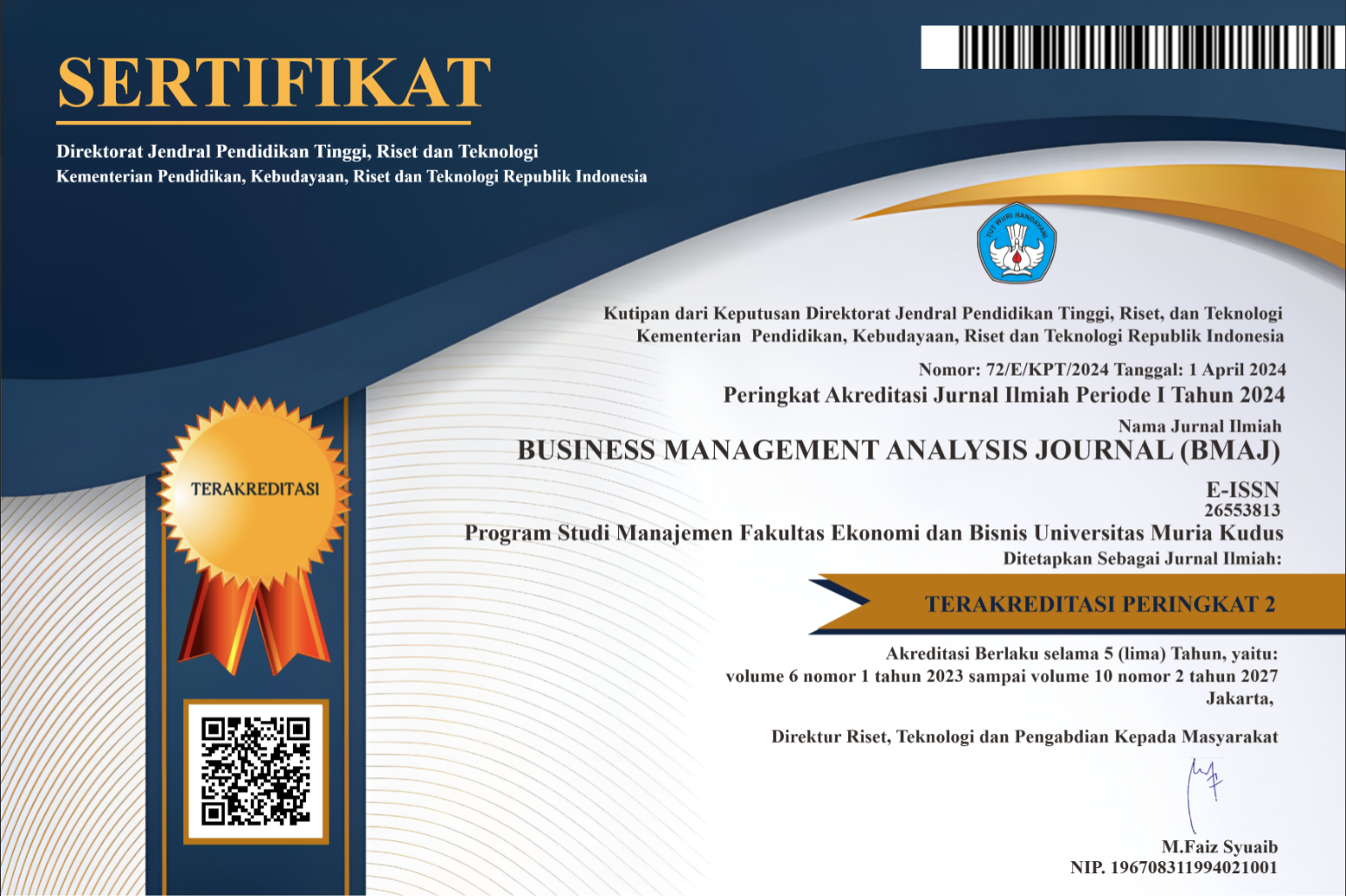Validation of the Cultural Intelligence Self-Assessment Scale in the context of DR Congo-Kinshasa
Abstract
Keywords
Full Text:
PDFReferences
Ayikwa, L. C., De Jager, J. W., & Van Zyl, D. (2019, February). Enhancing the Theory of Planned Behaviour by Incorporating Social Marketing Behavioural Enhancers: A First VS Second Order Confirmatory Factor Analysis Approach. Journal of Economics and Behavioral Studies, 11(1), 39-151. Retrieved from https://core.ac.uk/download/288023276.pdf
Brislin, R., Worthley, R., & MacNab, B. (2006, February). Cultural intelligence: Understanding behaviors that serve people’s goals. Group & Organization Management, 31(1), 40–55. doi:10.1177/1059601105275262
Bucher, R. D., & Bucher, P. L. (2008). Building cultural intelligence (CQ): Nine megaskills. Upper Saddle River, New Jersey: Pearson.
Cherry, K. (2019, July 17). Gardner's Theory of Multiple Intelligences. Retrieved November 18, 2021, from https://www.verywellmind.com/: https://www.verywellmind.com/gardners-theory-of-multiple-intelligences-2795161
DuBrin, A. J. (2014). Human relations: Interpersonal Job-Oriented skills. (12 ed.). London: Pearson.
Earley, P. C., & Ang, S. (2003). Cultural intelligence: Individual interactions across cultures. Palo Alto, CA: Stanford University Press.
Earley, P. C., & Mosakowski, E. (2004, October). Cultural Intelligence. Harvard Business Review, 139-146. Retrieved from https://hbsp.harvard.edu/product/R0410J-PDF-ENG
Gardner, H. E. (1993). Multiple intelligences: The theory in practice. New York: Basic Books.
Goleman, D. (1998). Working with emotional intelligence. New York: Bantam Books.
Guðmundsdóttir, S. (2015). Nordic expatriates in the US: The relationship between cultural intelligence and adjustment. International Journal of Intercultural Relations, 47, 175-186. doi:10.1016/j.ijintrel.2015.05.001
Hair, J., Black, W., Babin, B., & Anderson, R. (2010). Multivariate data analysis: A global perspective (7th ed.). London: Pearson Education.
Hermida, R. (2015). The problem of allowing correlated errors in structural equation modelling: concerns and considerations. Computational Methods in Social Sciences, 3(1), 5-17. Retrieved from http://cmss.univnt.ro/wp-content/uploads/vol/split/vol_III_issue_1/CMSS_vol_III_issue_1_art.001.pdf
Huang, F. M. (2007). Structural Equation Modeling: Theory and Application. Taipei: Wu Nan.
Karl, A. (2005). Social Intelligence: The New Science of Success. San Francisco, United States of America: Jossey-Bass.
Khodadady, E., & Ghahari, S. (2011, November). Validation of the Persian Cultural Intelligence Scale and Exploring Its Relationship with Gender, Education, Travelling Abroad and Place of Living. Global Journal of Human Social Science, 11(7), 64-76. Retrieved November 11, 2021, from https://globaljournals.org/GJHSS_Volume11/10-Validation-of-the-Persian-Cultural-Intelligence-Scale.pdf
Klafke, R., Picinin, C. T., & Townsend, D. A. (2019). Cultural Intelligence: A Review Perspective for Business Administration. Journal of Global Economics, 7(3), 1-8. Retrieved November 11, 2021, from https://www.hilarispublisher.com/open-access/cultural-intelligence-a-review-perspective-for-business-administration.pdf
Livermore, D. (2011). The cultural Intelligence Difference- Special Ebook Edition: Master the One Skill You Can't Do Without in Today's Global Economy. New York: AMACOM.
Livermore, D., & Van Dyne, L. (2015). Cultural Intelligence: The Essential Intelligence for the 21st Century. n.l.: SHRM Foundation. Retrieved November 18, 2021, from https://www.shrm.org/hr-today/trends-and-forecasting/special-reports-and-expert-views/Documents/Cultural-Intelligence.pdf
Nkashama, J. (2015). RDC: les inconvénients du tribalisme en milieu professionnel [Recorded by A. Kwanzaka]. Kinshasa, Kinshasa, Democratic Republic of Congo: Radio Okapi. Retrieved Niovember 18, 2021, from https://www.radiookapi.net/nationale/2011/11/24/rdc-les-inconvenients-du-tribalisme-en-milieu-professionnel
Nunnally, C., & Bernstein, I. (2010). Psychometric theory. New York: McGraw-Hill.
Serrat, O. (2017). Understanding and Developing Emotional Intelligence. In O. Serrat, Knowledge Solutions: Tools, Methods, and Approaches to Drive Organizational Performance (pp. 329-339). Singapore: Springer. doi: 10.1007/978-981-10-0983-9_37
Shyu, C. H., Li, Y. L., & Tang, Y. (2013, August). Applying Confirmatory Factor Analysis on the Measure for Restaurant Over-service. The Journal of International Management Studies, 8(2), 10-16. Retrieved July 9, 2018, from http://www.jimsjournal.org/2%20Yong,%20Tang.pdf
Solomon, A., & Steyn, R. (2017). Cultural intelligence: Concepts and definition statements. S.Afr.J.Bus.Manage., 48(2), 67-74. Retrieved November 19, 2021, from file:///C:/Users/user/Downloads/29-72-1-SM.pdf
Tabachnick, B. G., & Fidell, L. S. (2019). Using multivariate statistics (7th ed.). New York, United States of America: Pearson Education.
Thorndike, E. L. (1920). Intelligence and its Uses. Harper’s Mag, 227-235.
Triandis, H. C. (2006). Cultural intelligence in organizations. Group & Organization Management, 31(1), 20–26. doi:10.1177/1059601105275253
Yates, J. F., & De Oliveira, S. (2016). Culture and decision making. Orgsnizational behavior and human decision processes, 136, 106-118. doi:10.1016/j.obhdp.2016.05.003
Yermentayeva, A. R., Kenzhebayeva, K. S., Umirbekova, A. N., Aubakirova, Z. K., & Iskakova, A. B. (2016). Structural Peculiarities of Social Mental Abilities of Future Teachers. INTERNATIONAL JOURNAL OF ENVIRONMENTAL & SCIENCE EDUCATION, 11(18), 12629-12636. Retrieved November 18, 2021, from https://files.eric.ed.gov/fulltext/EJ1124654.pdf
DOI: https://doi.org/10.24176/bmaj.v5i2.8488
Refbacks
- There are currently no refbacks.
Copyright (c) 2022 Business Management Analysis Journal (BMAJ)
View My Stats
Member of:
Indexed by:
Business Management Analysis Journal (BMAJ) is licensed under a Creative Commons Attribution-ShareAlike 4.0 International License.
Dedicated to:










